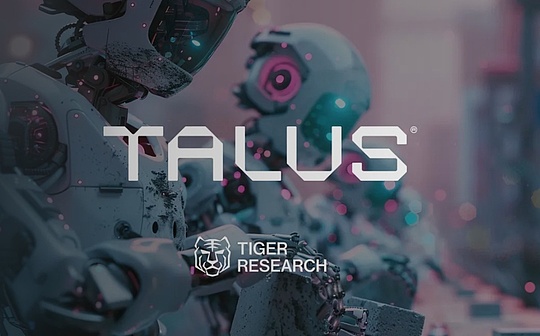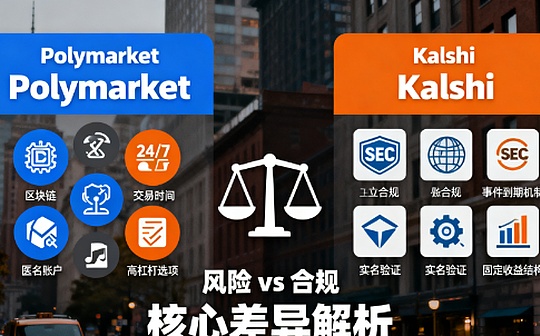
In the past decade, AI has been defined as “intelligent productivity” – it helps humans make decisions, optimize processes, and save costs.Now, a more fundamental problem is approaching:When AI no longer just thinks and expresses, but can “spend money” autonomously, how will the world’s economic order be rewritten?
The emergence of AI payment means that machines participate in value exchange for the first time.It changes from a cognitive system to an economic individual.It requires identity, accounts, credit, contracts, clearing, and even liability.When we discuss the next step of AI, it is no longer about algorithms, computing power or large model scale, but a more basic question – when AI truly participates in economic activities, how will it “pay”?Who gives it account, credit, clearing and responsibility?
The redesign of the payment system will determine the boundaries of the smart economy.We found that three completely different paths have emerged around “how to pay for AI.”
One isAn institutional approach centered on identity and supervision, trying to allow AI to operate legally within the existing financial system; one isEncrypted native path based on blockchain, allowing AI to become an autonomous economic node; another one isA vertical integration path centered on enterprise ecology, through productization and packaging, let AI payment be implemented first.
These three routes are like the Trisolaran civilization, independent of each other but interacting with each other.They do not wax and wane, but explore the same problem under different trust logics——In a world where machines can fulfill contracts, how should trust be re-established?
Google: Let AI “spend money on behalf of people” in the system
Google’s approach is most like imperial thinking.The AP2 (Authorized Payment Protocol) it launched is a set of “AI authorized payment protocols” that try to make the economic behavior of machinesEmbedded into the existing financial system.In other words, it’s not about letting AI own accounts;Execute payments on behalf of humans to the extent authorized.
Its core mechanism includes three links:Authentication, authorization credentials, payment execution.
Users first define their own AI permissions in the system – for example, this AI can pay subscription fees, place ads, and settle computing power bills for me, but it cannot transfer money or invest.Whenever the AI initiates a payment, the system generates a short-term encrypted authorization (similar to a one-time digital signature), and Google’s network verifies the identity before executing the transaction.After payment is completed, the authorization automatically expires.
Under this mechanism,AI is only the executor, not the subject of the account.The money it spends still comes from human wallets, and settlement still goes through the payment channels of banks, card organizations, or Google Pay.AI is just an “agent”, and its permissions and boundaries are jointly defined by users and regulators.
The problem Google wants to solve is:How can AI safely help people spend money without exceeding their authority or breaking the law?It is not about freedom;Controllability and Compliance.This is “imperial trust”: trust comes from identity and regulation, not algorithms.
Coinbase: Let AI “spend its own money”
Coinbase thinks the opposite way.It is not about letting AI represent anyone;Become an economic subject yourself.
In this crypto-native system, each AI can generate its own encrypted wallet (equivalent to a bank account), and its behavioral rules are defined by smart contracts.
For example, you can inject 1 ETH into the AI wallet in advance and write the rules: “Each task expenditure must not exceed 0.05 ETH; payment must be recorded in the on-chain contract; if the balance is less than 0.1 ETH, automatically request replenishment of funds.” From that moment on, the AI becomes an independent “economy.”It can independently trade with other agents, pay API fees, purchase computing power, and distribute rewards——The entire process does not require any human authorization.
Coinbase’s x402 protocol is designed for this autonomous economy, allowing direct communication and settlement between different AIs.Transactions are completed via the blockchain, and funds are transferred directly from the AI wallet without the need for a bank or payment company intermediary.
The core logic of this system is:Trust no longer comes from identity, but from code.There is no authority from above and no manual review – the contract rules are the law.It solves another problem:How can AI participate in economic activities independently without human endorsement?That’s why it worries regulators the most: Who owns the assets in a world like this?Who bears the risk?Who can supervise?
Stripe: Implementation is the most important thing
If Google wants AI to spend money in the cage of the system, Coinbase wants AI to jump out of the cage and spend money on its own.Then Stripe represents the third kind of thinking – allowing AI to spend money first.It does not talk about grand institutional revolution, nor does it pursue freedom in the encryption world, but returns to the starting point of business:Settlement.
Stripe’s starting point is actually very realistic.In today’s Internet world, almost all economic activities are based on “automatic payment” – advertising, subscription deductions, API calls, and cloud computing power settlement. These cannot be completed by manual instructions.If AI wants to truly enter the business cycle, it must have the ability to “autonomous settlement.”As for this matter, the traditional payment system does not support it, and the encryption system is not recognized by supervision.Therefore, Stripe chose the third path – to build a functional bridge between the existing system and the future system.
It creates a link calledTempo’s enterprise payments network, neither relies on the authorization system of financial institutions like Google, nor is it completely decentralized like Coinbase, butHosted and audited by Stripe itself.Tempo is closed, but it is compatible with blockchain-based smart contracts and can also be connected to legal currency accounts.Developers only need to call Stripe’s SDK, and AI can complete payments, settlements, tax declarations and other actions in the background – for example, it automatically pays advertising budgets, purchases computing power, and settles data fees, all of which are executed by Stripe’s system in the background.
In this model, the AI neither owns the wallet nor signs the authorization. It hands over the payment rights to the platform.Trust no longer comes from regulation, nor from algorithms, but from the business itself – from Stripe’s credit, compliance and risk management.This is a typical “business trust”: not because the world is perfect, but because someone is willing to take responsibility.
If you look at it in a specific scenario, the difference becomes clearer.An AI responsible for operating an advertising account: In Google’s system, it must be authorized before payment, and the amount and purpose are within regulatory rules; in Coinbase’s system, it holds its own wallet and can settle advertising fees directly on the chain, and the transaction is public but cannot be revoked; while in Stripe’s system, it does not care about wallets and signatures, it only issues instructions – the Tempo network will automatically handle all clearing, tax, and compliance reports.AI payment becomes like calling a function, clean, fast and visible.
The problem that Stripe wants to solve is not “Can AI spend money?” but “How can AI spend money safely in the real financial system?”It chooses to use corporate credit hosting machine trust to encapsulate complex financial relationships in a productized way.But the cost is also clear.Tempo is Stripe’s private network, and all settlement paths are in the hands of the enterprise.Once the platform goes wrong, the entire system may shut down.
If Google represents the extension of the system and Coinbase represents the challenge of the system, then Stripe represents the integration of the system – replacing system conflicts with business efficiency.Its revolution is not to overthrow the old world, but to enable new technologies to be implemented in the old world first.The competition among the three is not only a competition of technology, but also a competition of systems.Who will be responsible for the future AI world?Is it the supervision, the code, or the platform?
This won’t be an either/or choice.There is never just one winner in a payments system.Whether it is VISA, SWIFT, PayPal or digital yuan, they have coexisted for decades.The emergence of a new payment system will not eliminate the old system, but will coexist and overlap with it until the market and supervision accept it.
legal challenge
In this change,The real problem is not technical, but legal.
Can AI become an independent economic entity?Can I legally hold assets and sign contracts?If its payment behavior goes wrong,Who should bear the responsibility?This is the “fundamental problem” of all current AI payment solutions.In the on-chain world, smart contracts are irrevocable, which makes trust stronger and mistakes more fatal.Once the AI makes a misjudgment and funds are transferred incorrectly, there is no “withdraw” button.In the traditional legal system, the accountability of transactions is the bottom line of the system – every payment must have a clear responsible person.If AI’s autonomous payment cannot be included in the legal liability framework, its “freedom” cannot be recognized by the system.
This is why I don’t think AI will have a real economic personality in the short term.It can execute payments but cannot bear the consequences.Every step of AI payment still requires human signature, platform custody, and institutional endorsement.This is like the early stages of self-driving cars. Technically, we can let it go, but legally we dare not let it go.The same is true for the future of AI payment – we must first design a complete “intelligent agent liability system”, including authorization rules, loss compensation, risk insurance, and regulatory interfaces, otherwise this system will soon collapse.
In the short term, AI payment will first appear in existing payment systems in the form of “intelligent authorization”, such as the automatic settlement function in Google Pay, Apple Pay or WeChat Pay; in the medium term, enterprise-level scenarios (SaaS calls, advertising settlement, API billing) will take the lead in forming an automatic payment ecosystem, and the Stripe model is most likely to be commercialized; and in the long term, Coinbase-style decentralized systems, although subject to the greatest compliance pressure, are most likely to breed real institutional innovation.Because it raises fundamental questions—who owns the assets, who defines trust, and who bears responsibility.
Technology will eventually force new answers from the law.Perhaps future contract law will add an “intelligent agent liability clause”, and perhaps future anti-money laundering regulations will have an “AI customer identification” chapter.The evolution of AI payment will eventually force the evolution of the system.






